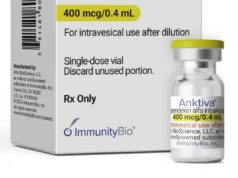
As the global pandemic begins to subside, health plans are faced with a new set of challenges. For many consumers, the past 12-plus months have been stressful, to say the least, and for health plans, keeping their members informed, satisfied and (most importantly) healthy has never been more difficult
And yet, even as health plans tackle the high “degree of difficulty” in this current climate, member satisfaction has never been more vital for Medicare and Medicaid plans’ financial performance. With Consumer Assessment of Healthcare Providers and Systems (CAHPS) survey measures quadruple-weighted for contract year 2021, accounting for 32% of plans’ overall Star Rating, the stakes for delivering member experiences that drive satisfaction are high. Those plans with solid member satisfaction levels must work to maintain their status, while those that are falling behind need to quickly step up their efforts.
What can plans do to improve the overall member experience, in turn giving themselves a much better chance at positively impacting their CAHPS scores (and Star Ratings)? Here are five things they should be thinking about right now:
- Make the healthcare experience convenient. In today’s world, Amazon has become the gold standard when it comes to offering consumers a seamless experience that makes it easy for them to quickly find and purchase what they need. Providers such as Devoted Health, Oscar and Clover Health have taken an experience-centric approach with varying degrees of success, but plans should know that members expect the same level of convenience and service they are used to in this increasingly on-demand world. This might include offering easy online access to forms, short phone wait times (or better yet, an automatic call-back option), and live agents during regular business hours. Plans are also tackling the digital divide when it comes to healthcare access. Working to solve barriers presented by the digital divide will not only lead to higher levels of satisfaction and CAHPS scores, but will increase the value the member receives from the plan.
- Personalize the member experience. Health plan members are not “one-size-fits-all,” so the plan’s engagement strategy with members shouldn’t be either. In the consumer world, restaurants understand this and have mastered it—if you’re a regular at Starbucks, for example, your experience on the company’s app is tailored to you based on your previous activity and preferences. When it comes to healthcare, plans should know the channels and platforms their members use and the types of messages they prefer to receive. An effective multi-channel mix typically includes email, text messages, phone calls, traditional mail, social media, interactive voice response (IVR) and in-person interaction (when available, of course). On a larger scale, plans should also have programs and services in place that meet members’ specific individual needs.
- Communicate clearly. Broadly speaking, healthcare is a complicated topic that can quickly become confusing for some and downright daunting for others. When this is the case, plans need to explain complex medical terminology in plain, easy-to-understand language while avoiding cliches, idioms and slang used by medical insiders. Graphic design also plays a role—simple and straightforward design helps readability.Understanding what drives member engagement, behavior and satisfaction through behavioral research shows that language and design that resonates with people’s beliefs and values drives satisfaction because they feel a connection to the messaging from their health plan. Most importantly, telling members what they should be doing isn’t enough; they also need to explain to them why it matters.
- Become an education source for members. When health plans become a go-to source for up-to-date and accurate healthcare information, they become a resource their members increasingly depend on. This started to shift during the height of the pandemic last year, as insurers became the fourth most trusted source of coronavirus information behind only the CDC, WHO and healthcare providers, and ahead of TV and online news. This makes it imperative for plans to provide information and access to resources that members may not have even known existed, including those offered through community partnerships. Another best practice is to anticipate potential dissatisfaction among members and communicate what they should do if they have a bad experience. Ultimately, members appreciate this level of transparency.
- Proactively address known member concerns. Many plans use mock surveys to gauge sentiment and identify unhappy members, but the real value (and opportunity) comes when plans address the issues that are raised, ideally in real time. Taking action on the common concerns raised in mock surveys— whether it’s making vaccine information easy to find or linking directly from the survey to care navigators or behavioral health resources—is an effective way to improve the overall member experience before the member receives the actual CAHPS survey to complete.
In the end, plans need to position themselves as a valuable resource in members’ healthcare journey that knows and speaks to those individuals in a personalized way. It’s no longer about just getting members to care. It’s also about keeping them educated and informed about the benefits of the plan itself and the resources available that make the member experience even better.
Photo: Tero Vesalainen, Getty Images








